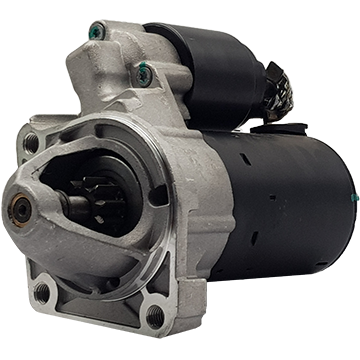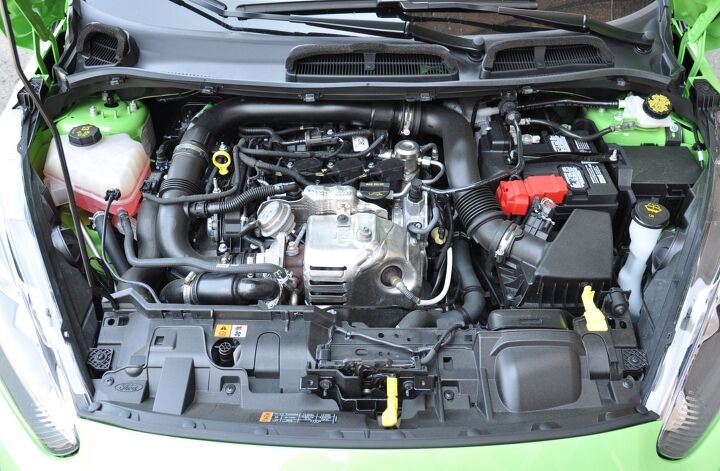Expert Tips for Optimizing Your Ford Fiesta Engine Efficiency
Checking Out the Advancement of Engines: From Timeless Layouts to Modern Marvels
The evolution of engine modern technology stands for a substantial narrative in the history of technology, noted by essential advancements that have constantly redefined transport and industry. From the preliminary steam engines that powered the Industrial Transformation to the development of interior combustion engines that changed movement, each phase has actually added to better effectiveness and ability. Presently, the change to electrical power signifies not only a technological change yet likewise a broader dedication to environmental sustainability. As we analyze these turning points, one need to consider how the future of engine layout may unfold, challenging our perceptions of power and effectiveness.
The Birth of Engine Modern Technology
The development of engine technology marked a critical moment in human technology, changing power conversion and transport. The earliest engines emerged from the requirement to harness mechanical power for useful usage, leading to the development of tools that converted various power kinds right into activity (ford fiesta engine).
The growth of the inner combustion engine and the creation of the heavy steam engine catalyzed a profound change in commercial capabilities. These engines not only improved performance yet additionally expanded the range of human wheelchair, allowing unprecedented transportation possibilities. The very early models laid the groundwork for the mechanized globe, facilitating the surge of sectors and reshaping social frameworks.
As engine styles progressed, they integrated innovative products and progressed design principles, leading the method for contemporary developments - ford fiesta engine. The birth of engine innovation fired up an unrelenting pursuit of efficiency and power, establishing the stage for the dynamic development of transportation and commercial machinery that would certainly comply with
Steam Engines and Their Effect

The steam engine's influence was especially evident in the transport field (ford fiesta engine). Steam-powered engines helped with the quick activity of products and people across substantial ranges, efficiently shrinking the geographical barriers that had previously prevented trade and communication. Similarly, steamships transformed naval travel, permitting for quicker and extra trusted crossings of seas and rivers.
In industry, vapor engines powered factories, making it possible for mass manufacturing and the surge of metropolitan facilities as hubs of economic task. This shift not only changed labor characteristics but additionally contributed to the introduction of a consumer-driven society. Additionally, vapor modern technology fostered technologies in design and manufacturing procedures, preparing for future improvements in engine design. The heritage of heavy steam engines is extensive, reflecting a zero hour in human ingenuity and the ruthless quest of progression.
The Increase of Interior Burning
Often eclipsing steam power, the surge of inner burning engines marked a transformative shift in transportation and industry during the late 19th and early 20th centuries. The development of these engines, identified by their capacity to shed fuel within the engine itself, allowed better performance and power compared to standard vapor engines. Pioneering developers such as Nikolaus Otto and Rudolf Diesel played crucial duties in perfecting engine designs, resulting in widespread fostering in cars, watercrafts, and commercial machinery.
The internal combustion engine's compact dimension and fairly lightweight nature helped with the emergence of personal automobiles, reinventing individual flexibility and improving urban landscapes. By making it possible for faster traveling and the reliable transportation of products, these engines catalyzed economic growth and cultivated globalization. The flexibility of fuel choices, including gasoline and diesel, further improved their allure, permitting varied applications across numerous fields.
Despite the ecological concerns that would later emerge, the preliminary attraction of interior combustion innovation stocked its transformative potential. As culture embraced this technology, the foundation was laid for modern-day transport systems, go to these guys establishing inner combustion engines as a foundation of commercial improvement and life throughout the 20th century.
Improvements in Engine Efficiency
As internal burning engines came to be essential to transport and sector, the focus moved in the direction of enhancing their efficiency to satisfy expanding needs for efficiency and sustainability. Developments in engine layout, material scientific research, and modern technology have considerably contributed to this development.
One major advancement is the advancement of turbocharging, which enables for raised air consumption, causing more complete fuel combustion and improved power outcome without increasing the size of engine dimension. Additionally, variable shutoff timing systems have been executed to enhance engine efficiency across numerous RPM arrays, thereby enhancing gas efficiency.
The usage of sophisticated gas shot technologies, such as direct injection, has actually also played an important role. This technique enables more specific control over the fuel-air combination, advertising far better combustion and lowering exhausts. Lightweight products, consisting of aluminum and composite parts, have been adopted to reduce general engine weight, leading to boosted effectiveness.
These improvements reflect a broader trend within the auto market, where the synergy between design technology and ecological considerations drives the ongoing mission for higher efficiency in inner burning engines. Therefore, modern-day engines are now extra powerful, cleaner, and reliable than ever previously, paving the means for an extra sustainable future in transport.
The Shift to Electric Power
With expanding problems over environmental influence and nonrenewable Resources fuel source dependence, the vehicle industry is experiencing a substantial shift in the direction of electrical power. This transition is driven by a mix of technical improvements, regulative pressures, and altering customer preferences. Electric lorries (EVs) supply a compelling choice to typical interior combustion engines, boasting lowered greenhouse gas emissions and reduced operating expense.
The surge of battery technology has been a video game changer, with lithium-ion batteries becoming extra effective and cost-efficient. Enhanced energy density and faster billing capacities have actually made EVs extra useful for daily use. Governments worldwide are executing rewards and setting enthusiastic targets for phasing out fossil gas cars, thereby increasing the adoption of electrical power.
As billing framework expands and battery modern technology proceeds to boost, the shift to electrical power is positioned to improve the automotive landscape, advertising sustainability and development in the years to come. The future try these out of transportation is electrical, and the energy is indisputable.
Conclusion
The evolution of engine modern technology represents a significant trajectory of innovation that has actually exceptionally influenced transportation and sector. From the foundational vapor engines to the transformative inner burning engines, each advancement has actually added to enhanced flexibility and financial growth. The present shift toward electrical power underscores an important dedication to sustainability, driven by developments in battery modern technology. This continuous evolution not only reflects transforming societal requirements yet additionally highlights the capacity for a cleaner and more reliable future in engine design.
